Archive
2021
KubaParis
'HOLY MOTORS'

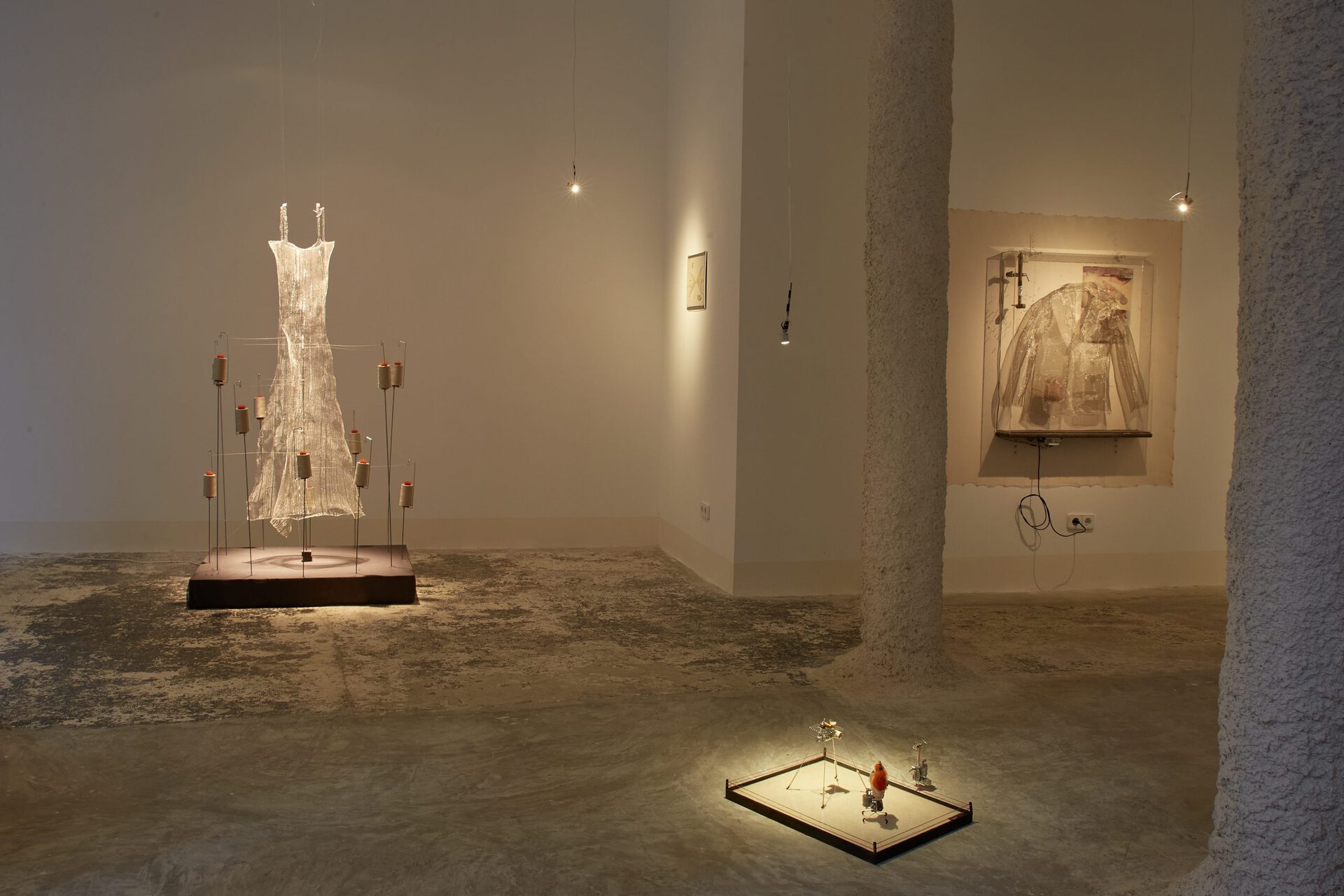




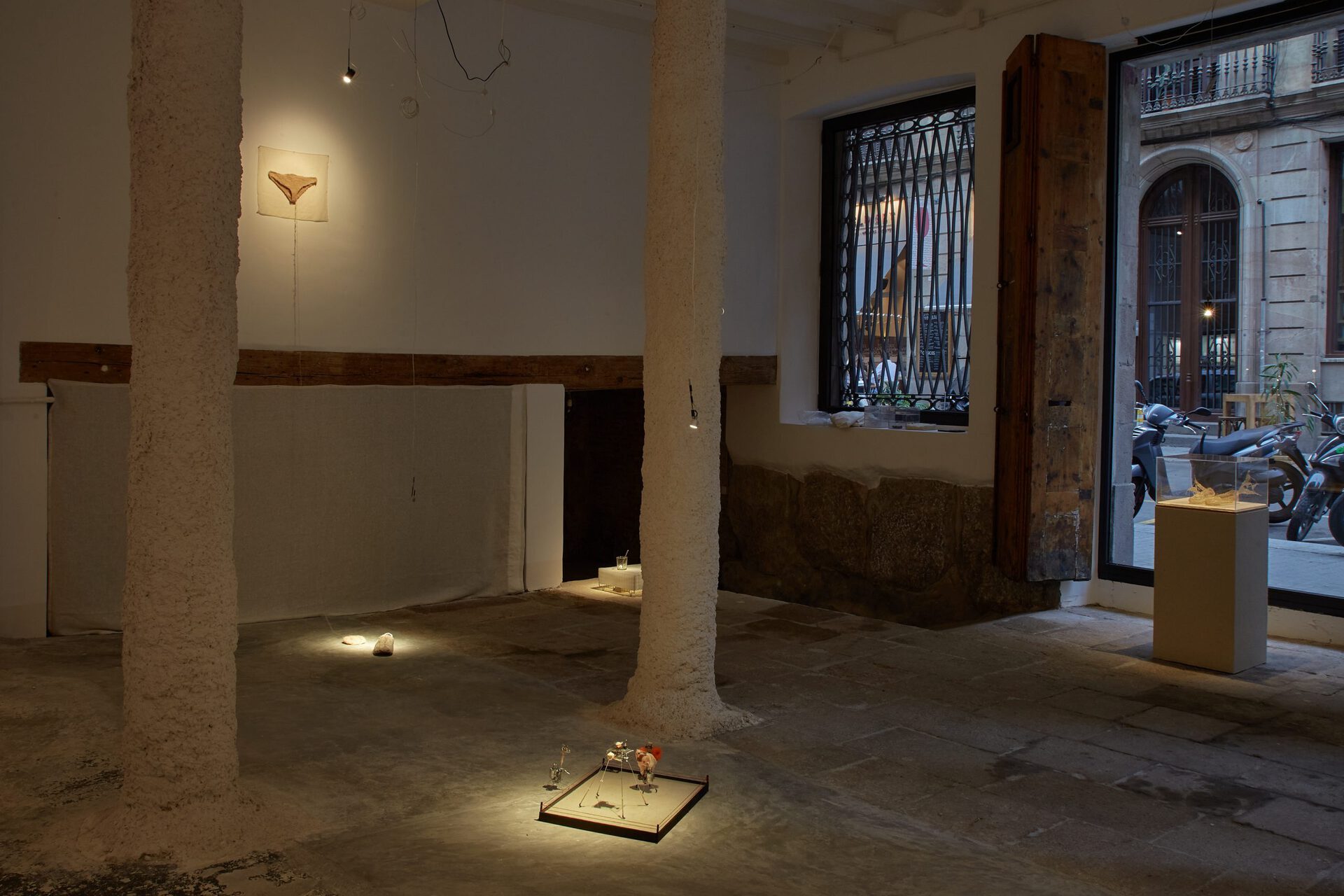


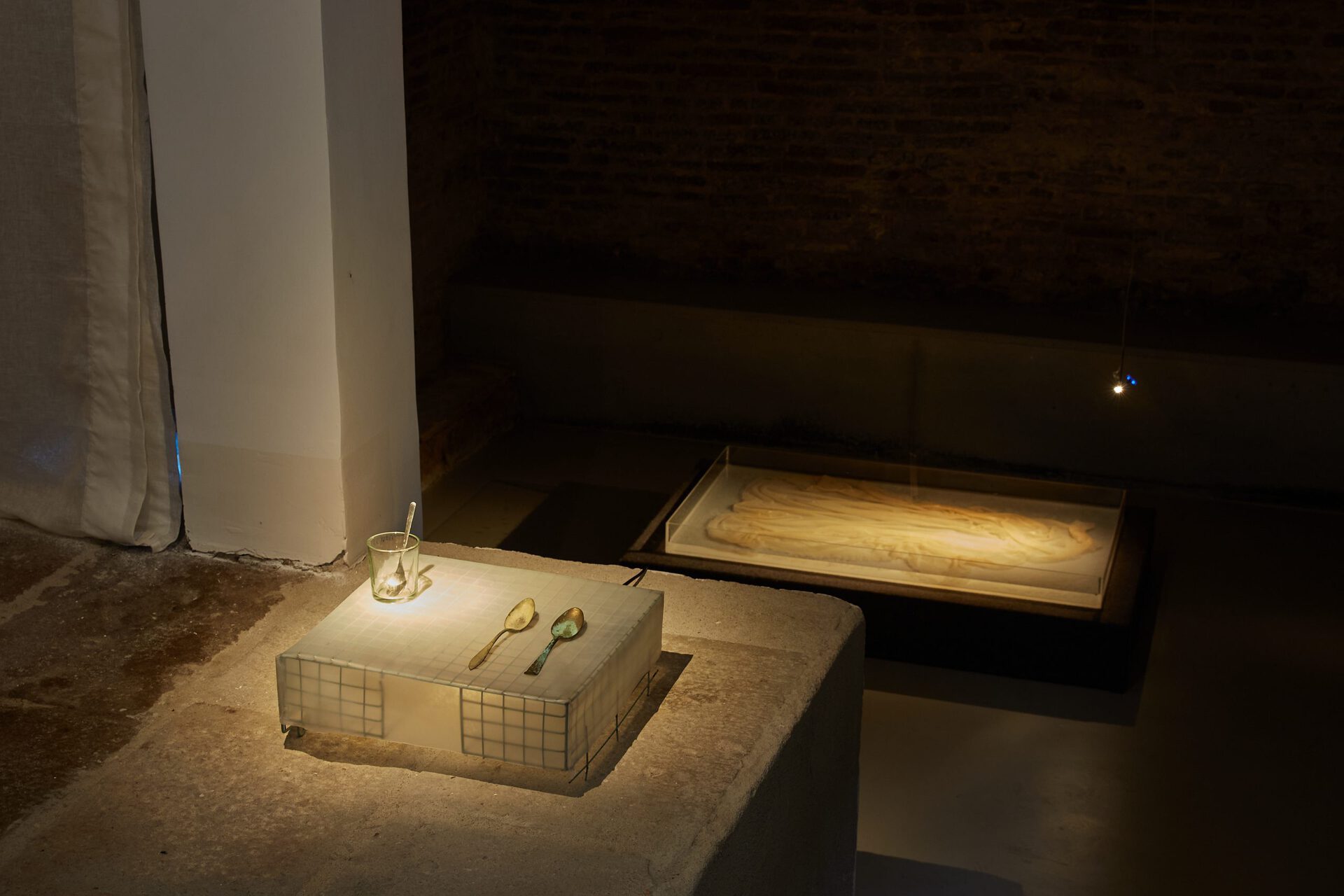

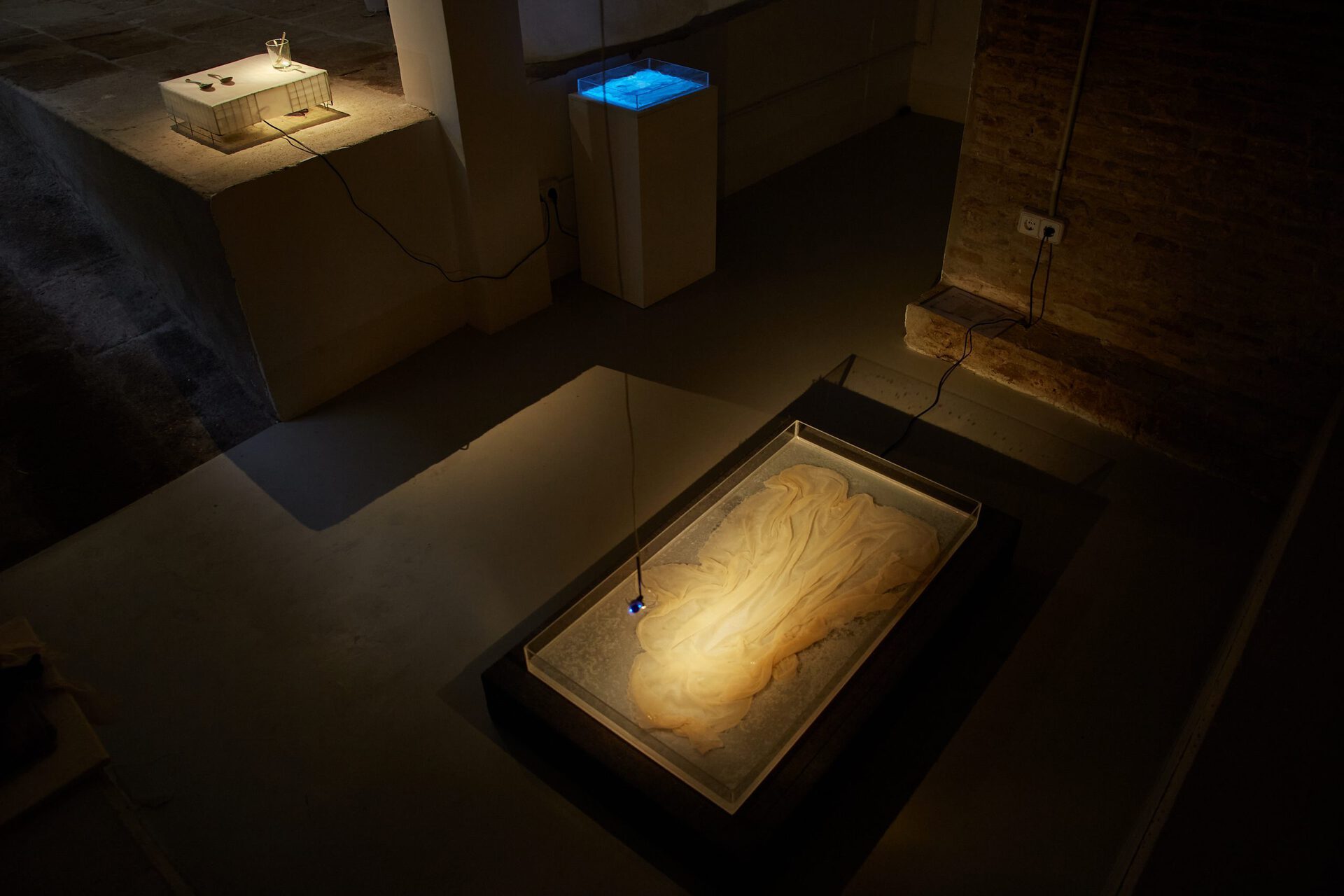
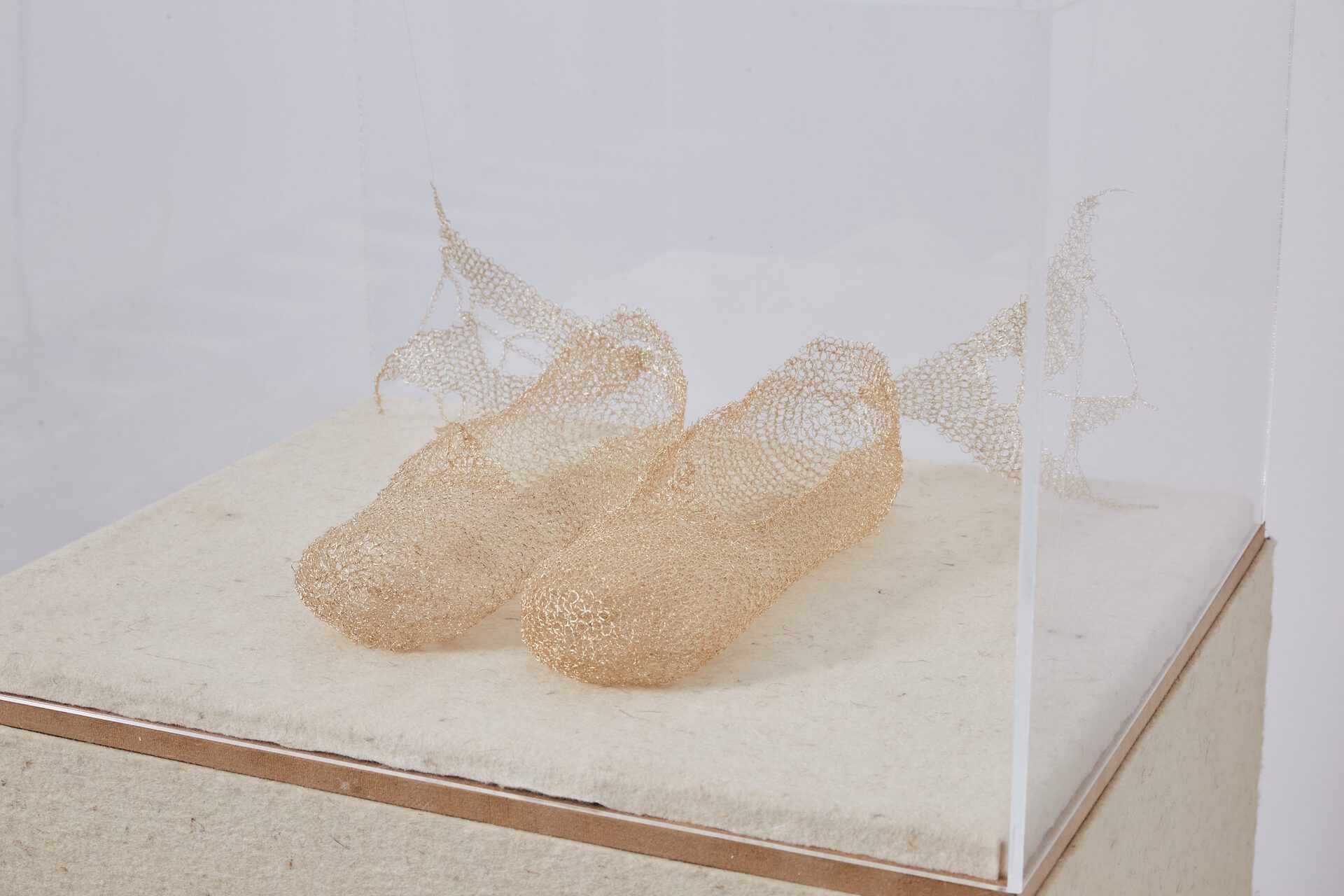
Location
Creixent ApareixDate
10.06 –19.06.2021Curator
Creixent ApareixPhotography
Roc PontText
Reality is composed of flat fabrics, which are deformed with mass’s weight. The more force there is, the more the fabric of reality is deformed and the more it attracts heavy bodies. The threads or magnets that move Julia Creuheras’ machines make the physical form of attraction visible, showing a visual reality based on movement. This fills the space as a symbol of the gravitational force of love; love for people, objects and actions. But how does the time go by, and how is mass and gravitational force like when we are in love? At the top of a mountain peak where the gravitational force is lower, will we die more slowly?
'HOLY MOTORS' is the title of the set of different love stories which, represented through machines, sanctify the motor as the impulse of an individual movement. Atrapasueños, 2021, a dress knitted in silver thread, is suspended in space while 12 cotton threads are wound inside. Gravity seems to be less, as if they were in a fantasy limbo on another planet, where their time passed more slowly. The dress is immobile, weaving itself by being filled with what it receives from the outside. Instead, Sueñoatrapado, 2021, a metal mesh suit encapsulated in a box covered with nails, which with a mechanized wooden hammer gives constant blows, seems to want to break its time axis on Earth. Unable to flee from their own time, the suit appears as a martyr eternally condemned to be itching to break their own watch. If Atrapasueños is on the planet Venus and Sueñoatrapado on Earth, the comparison between the two pieces emphasizes a temporal desynchronization, without finding a meeting point of the two masses in the same space.
Se le Cayeron a Hermes, 2021, winged sandals that agonize the movement of willing to take off and not being able to. The god of Greek mythology, Hermes, the messenger of his father Zeus and lovers, in addition to being the guide of dead souls to hell, seems to have lost his winged sandals. Thus, he cannot send a message to any lover and the act of communication between them is lost. Perhaps for this reason a love relationship is always lived individually. Because, if everything that exists has a different mass and weight, is it possible to share space and time with another body? The work No Fue Schrödinger Quién Mató al Gato, Fue la Curiosidad, 2021, evokes the midpoint where two masses meet, understanding it as a state of confrontation and combat between two forces fighting to attract or detach. However, the perception of time has to be different for each one, since each occupies a different body.
All the works in the exhibition suggest a form or an action that involves a human body. However, instead of being clothes or household objects, the pieces seem to personify themselves. They do it through the mechanised movement, granting themselves a life and time here and now for their spectators, sacralising the motor as the impulse of their individual movement. When put together, it is impossible not to establish comparative relationships that suggest that the part of reality that cannot be perceived must be completely different from the part of the world that can be.
If there were no one in the exhibition who could perceive the works, it would not matter that the pieces continued to move, despite being moved. The engines would continue to run, but as in any love relationship between two people, their existence would need to be acknowledged. Therefore, does it make sense for someone to play being dead in a pool if no one is looking at them? The artist asks this question from the position of a spectator; by giving life to the dead through the act of perception. Suggesting that, to make machines something personified, a perception is needed to activate them, although each perception configures a radically different reality.
Josep Barnadas